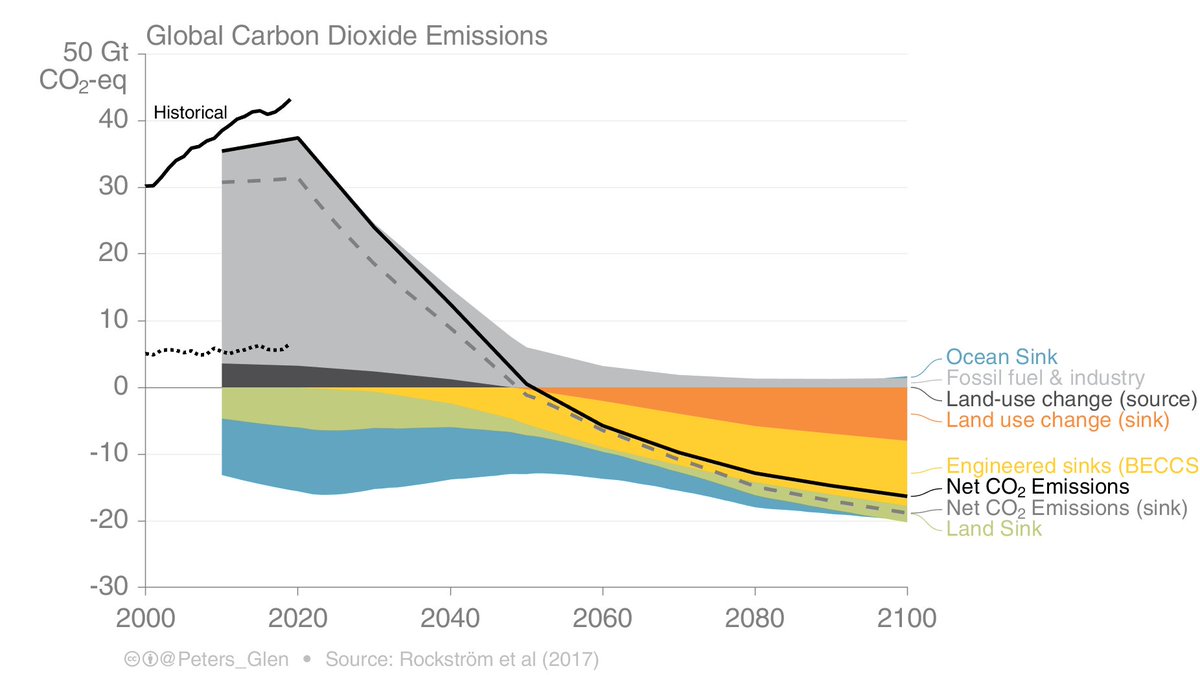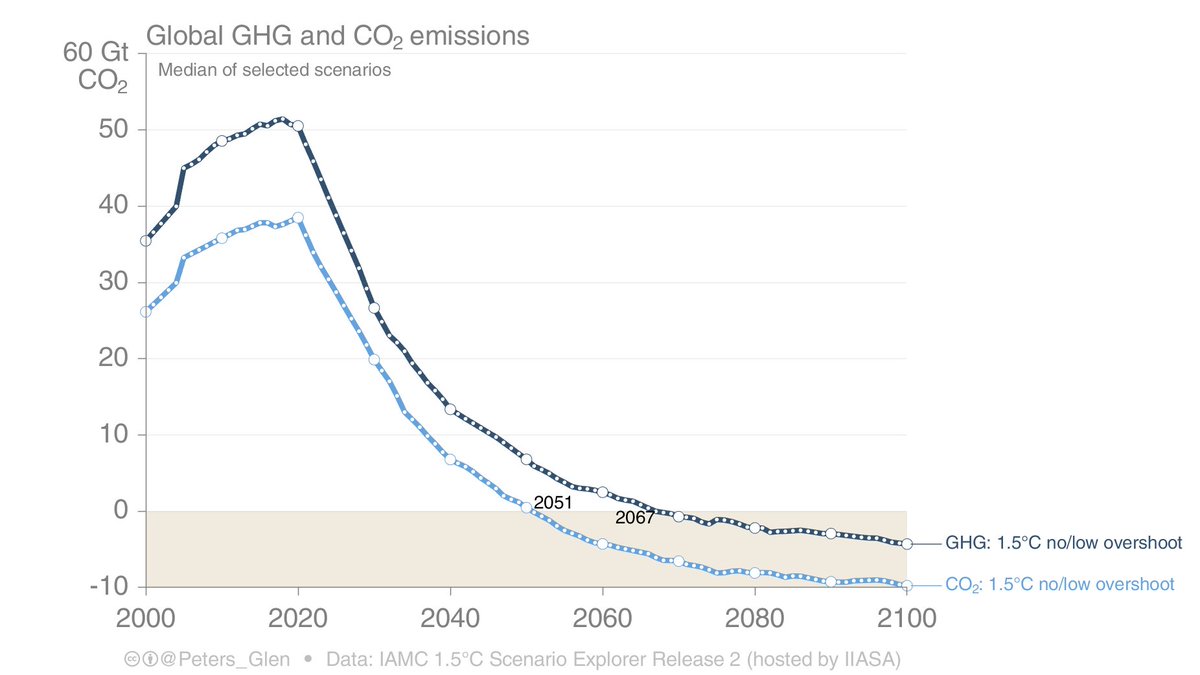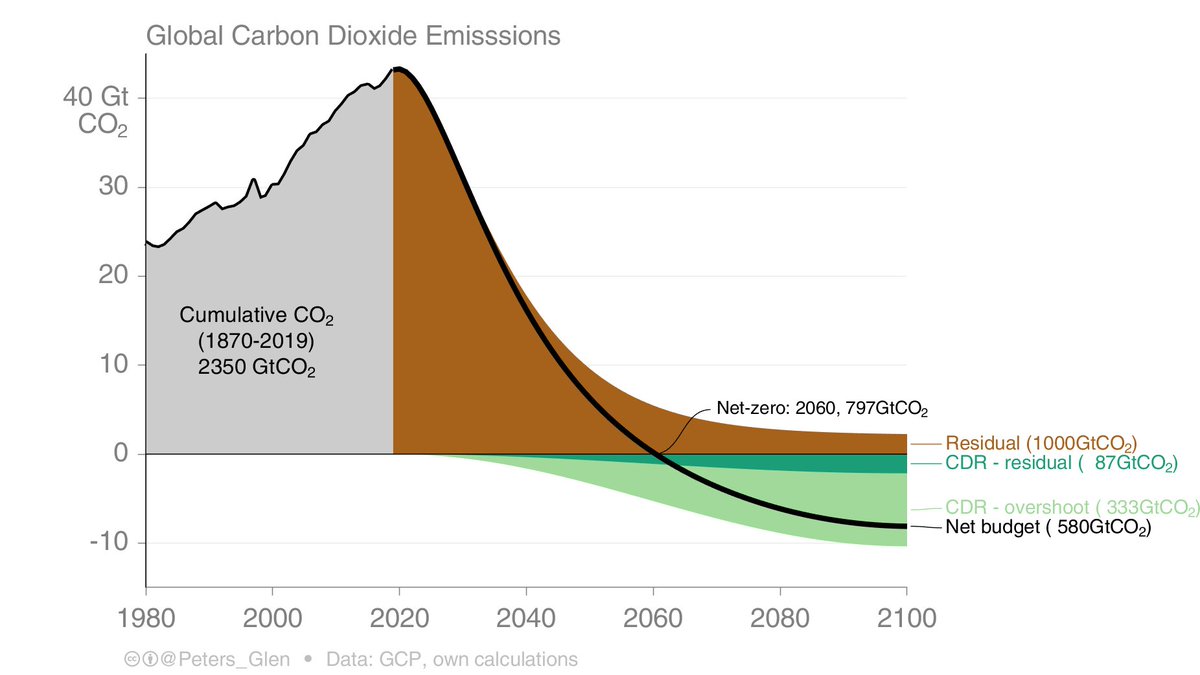
'Net' emissions are a slippery slope, but we already deal with net emissions. It is not so scary...
In most Annex I countries LULUCF emissions are a net-sink. The sink is mainly forest regrowth & recovery.
Net emissions have been here since 1990, at least...
1/
In most Annex I countries LULUCF emissions are a net-sink. The sink is mainly forest regrowth & recovery.
Net emissions have been here since 1990, at least...
1/

In the EU, most of the sink is increased uptake in existing forests, there is a small part of afforestation (dark green). There are also emission sources, such as from grasslands & new settlements.
Maintaining the sink over time (with climate impacts) could be hard.
2/
Maintaining the sink over time (with climate impacts) could be hard.
2/

The EU27 now includes the land sink (LULUCF) in its climate targets.
Perhaps this is good? It forces the EU to maintain & expand its sink.
Perhaps this is bad? The EU can now have 'net-zero' emissions in 2050 (though, studies suggest this is mainly agricultural)
3/
Perhaps this is good? It forces the EU to maintain & expand its sink.
Perhaps this is bad? The EU can now have 'net-zero' emissions in 2050 (though, studies suggest this is mainly agricultural)
3/

If some countries include their sink (LULUCF) they are already nearly net-zero GHG emissions. This is Sweden...
[Sweden, as far as I know, is not planning to use the sink in this way]
4/
[Sweden, as far as I know, is not planning to use the sink in this way]
4/

Globally, net land-use change emissions are the balance of a very big source (deforestation) & sinks (mainly reforestation).
There is a huge sink potentially globally, by stopping deforestation & enhancing sinks.
This is a net concept...
5/
There is a huge sink potentially globally, by stopping deforestation & enhancing sinks.
This is a net concept...
5/

While I know & understand many really dislike 'net', it is here to stay. Being more explicit on 'net' gives a better opportunity to discuss land-use change (deforestation & afforestation), enhancing sinks, etc.
6/
6/
Most don't like 'net' as they think it is a license to burn fossil fuels. That is the 𝐦𝐢𝐬𝐮𝐬𝐞 of 'net'. It also relates to use of large-scale carbon dioxide removal in scenarios, industries use of 'offsets', etc. These are different issues.
/end
/end
• • •
Missing some Tweet in this thread? You can try to
force a refresh


















